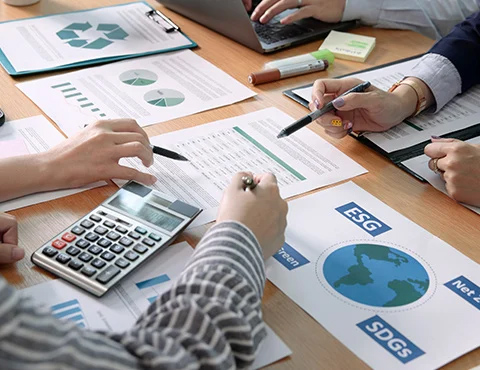-
Global
-
Africa
-
Asia Pacific
-
Europe
-
Latin America
-
Middle East
-
North America
- |
- Partners
- |
-
Currency:Localize your Content
You can set your preferred currency for this account.
Choose a Currency
Currency- CHOOSE YOUR CURRENCY
Update Currency
Changing Currency will cause your current cart to be deleted. Click OK to proceed.
To Keep your current cart, click CLOSE and then save your cart before changing currency.
-
Select Account
Switching accounts will update the product catalog available to you. When switching accounts, your current cart will not move to the new account you select. Your current cart will be available if you log back into this account again.
Account# Account Name City Zip/Post Code CANCELPROCEEDMy Account
-
Support
- View All Productivity Solutions
- Warranties
- Patents
- Global Locations
- Technical Support
- Discontinued Products
- Quality Program and Environmental Compliance
- Return Material Authorization (RMA)
- Legal Documents
- Product Certification
- Software Downloads
- Cyber Security Notifications
- Case Studies and Success Stories
- View All Sensing Solutions
- Sales Contact Form
- Technical Support
- Certificates
- eCOM Portal
- Distributor Inventory
- Return Material Authorization (Test & Measurement)
- Return Material Authorization (Citytech)
- Return Material Authorization (EnviteC)
- Legal Documents
- Intelligent Life Care
- Return Material Authorization (ILC)
-
Global
-
Africa
-
Asia Pacific
-
Europe
-
Latin America
-
Middle East
-
North America
- |
- Partners
- |
You are browsing the product catalog for
You are viewing the overview and resources for


Five Decades of Customer Successes
Over the last 50 years, CCC has helped customers around the globe navigate critical operational challenges. Explore the collection of memorable client initiatives throughout the years, which highlight the crucial role of turbomachinery controls in optimizing energy usage, curbing emissions, enhancing connectivity and more.
Projecting — and Delivering — $1.5M in Annual Energy Savings
 CCC helped a major Middle East oil and gas company optimize the energy usage of a complex gas compression facility — a solution that produced $1.5 million in annual energy savings. This was achieved by unleashing the full potential of CCC’s integrated turbomachinery controls system, which was installed in bits and pieces as the complex gas compression network was gradually built up and expanded over the years.
CCC helped a major Middle East oil and gas company optimize the energy usage of a complex gas compression facility — a solution that produced $1.5 million in annual energy savings. This was achieved by unleashing the full potential of CCC’s integrated turbomachinery controls system, which was installed in bits and pieces as the complex gas compression network was gradually built up and expanded over the years.
CCC created and discussed the project’s value proposition with various stakeholders, including the end user’s key production, maintenance and management personnel. Once all stakeholders were aligned on the initiative’s objectives and execution, CCC implemented the control system optimization at the site.
Although the project had minimal cost to the end user, it delivered significant value. These energy savings were independently validated by the end user, delivering value very close to what was proposed in CCC’s value proposition. The ability to accurately estimate a project’s value before execution requires substantial, specialized expertise. CCC’s engineers leveraged decades of work across four disciplines — process, machinery, instrumentation and control — to calculate the expected energy savings and execute a complex initiative that delivered on this promised value.
Optimizing a Fertilizer Plant’s CO2 Compressor Energy Consumption
 A fertilizer producer’s site in Pakistan featured a steam turbine-driven, two-section CO2 compressor on a urea unit. The compressor antisurge controls and auxiliary logic controls were supplied by and implemented in a third-party PLC. When operating the compressor, our customer faced numerous challenges, including antisurge valve hunting and excessive recycling.
A fertilizer producer’s site in Pakistan featured a steam turbine-driven, two-section CO2 compressor on a urea unit. The compressor antisurge controls and auxiliary logic controls were supplied by and implemented in a third-party PLC. When operating the compressor, our customer faced numerous challenges, including antisurge valve hunting and excessive recycling.
CCC was invited to perform a site survey to identify areas of concern and recommend improvements. CCC Technical Consulting Engineer Alan Wong performed a detailed site survey in May 2014 and produced findings that included excessive surge control margins, oversized recycle valves and other key issues. CCC calculated that the fertilizer plant could achieve more than $1 million in energy savings by implementing our antisurge control system. CCC also proposed a compressor surge test, which would allow our experts to locate the exact location of the surge lines and, as a result, better optimize the surge control margins. The client accepted CCC’s compressor surge test proposal.
CCC engineered and pre-configured two laboratory-use antisurge controllers, which were hand-carried to the site by a CCC Field Service Engineer. In November 2015, we conducted the compressor surge test and found that the OEM surge lines were significantly more conservative than the real surge lines. They required the antisurge controllers to open the recycle valves when it wasn’t necessary.
CCC optimized the surge control margins and successfully closed both antisurge valves. However, after three days, the CCC antisurge controllers were removed due to an internal policy against permanent use of laboratory-use controllers. Consequently, the original third-party PLC antisurge controls were restored, despite the customer's request to keep the CCC controllers.
The customer then purchased two CCC antisurge controllers. In October 2021, CCC’s field service engineers commissioned the CCC antisurge controllers and fully closed the two antisurge valves at a 100% plant load. The results were significant.
With surge control margins optimized and recycle valves fully closed, the customer eliminated energy loss due to recycling. The client confirmed a steam savings of 5 to 6 tons per hour, resulting in approximately $850,000 to $1.02 million in energy savings per year.
CCC also implemented fallback strategies to improve CO2 compressor availability and reduce the risk of production loss due to transmitter failure. If fallback strategies prevented the urea unit from shutting down once every five years and each averted shutdown would have lasted approximately six hours, prevented production loss would total around $78,000.
Beyond these operational and cost benefits, the optimized controls system reduced CO2 venting to the atmosphere, helping our customer make tangible sustainability progress.
Upgrading an Industrial Gas Supplier's Turbomachinery HMI
 CCC’s advanced turbomachinery HMI, Next Gen HMI powers a connected world. Intuitive, scalable, cybersecure and enabling seamless connectivity, CCC’s engineers built our Next Gen HMI software using the latest technologies. After successful proof-of-concept work during the summer of 2021, we began development in 2022 and then moved on to our first customer-witnessed factory acceptance test (FAT) in Houston.
CCC’s advanced turbomachinery HMI, Next Gen HMI powers a connected world. Intuitive, scalable, cybersecure and enabling seamless connectivity, CCC’s engineers built our Next Gen HMI software using the latest technologies. After successful proof-of-concept work during the summer of 2021, we began development in 2022 and then moved on to our first customer-witnessed factory acceptance test (FAT) in Houston.
By participating in the FAT, the customer’s plant operators were able to get the true visual experience of Next Gen HMI. Plant operators play an important role when deciding which visual system to adopt, which made their involvement particularly critical.
Throughout the FAT, the customer provided overwhelmingly positive feedback, highlighting the software’s ease of use, customizability, responsiveness, security and overall look. Thanks to our customer’s collaboration and our R&D team’s hard work, we have resolved some small issues with Next Gen HMI and are preparing to bring this revolutionary software to more customers.
Enhancing Gas Turbine Control for NOx Emission Reduction
 As environmental regulations become increasingly stringent, addressing the challenges associated with nitrogen oxide (NOx) emissions from gas turbines is imperative. Over the years, CCC has helped numerous customers solve this key challenge, which is particularly pronounced in compression trains suffering from obsolescence and reliability issues.
As environmental regulations become increasingly stringent, addressing the challenges associated with nitrogen oxide (NOx) emissions from gas turbines is imperative. Over the years, CCC has helped numerous customers solve this key challenge, which is particularly pronounced in compression trains suffering from obsolescence and reliability issues.
One critical area of concern is inefficient process and antisurge control, exacerbated by outdated tuning that fails to meet emission standards. Within the compressor, consisting of a 17-stage axial compressor with a pressure ratio of 14:1, and inlet guide vanes (IGVs) ensuring nearly constant speed, the inefficiencies lead to NOx generation. The combustion section, featuring cannular combustion chambers with air in reverse flow and fuel gas control, further contributes to NOx emissions. The problem is compounded by the presence of high-pressure (HP) and low-pressure (LP) turbines, along with nozzles. Given these dynamics, mitigating NOx formation requires a comprehensive solution.
NOx primarily originates from two sources within the gas turbine: prompt NOx, resulting from rapid reactions on the flame front, and thermal NOx, arising from the oxidation of atmospheric nitrogen in combustion, influenced by flame temperature and combustion chamber design. When in contact with air, NO oxidizes to NO2, leading to increased ozone (O3) levels, acid rain and potential damage to the ozone layer.
The proposed solution, which involves NOx reduction through the combustion of premixed lean mixtures, presents several challenges. These include overall control system tuning, mapping and tuning of Dry Low NOx (DLN) systems at various loads, ensuring stable and precise lambda control within a narrow range, and implementing a hard real-time CCC Prodigy Controller with a 20 ms scan time for control applications. Additionally, achieving valve positioning closed-loops in less than 1 ms, loop-decoupling, employing nonlinear control strategies, and monitoring combustion chamber pulsations are essential for successful implementation.
Despite the challenges, the results of implementing these solutions have been promising. At 50% load, a remarkable 64% reduction in NOx emissions was achieved, demonstrating the effectiveness of the approach. At 75% load, our solution delivered a 52% reduction, highlighting its scalability across different operating conditions. Even at full load, a substantial reduction of 52% in NOx emissions was realized, underscoring the efficacy of CCC’s control strategies.
Over the last five decades, CCC has helped more than 5,000 clients around the world discover the operational and environmental benefits of turbomachinery controls solutions. Explore the CCC 50th Anniversary project for more on our company’s history, the experts who have shaped the CCC story and the evolution of turbomachinery controls space since our founding in 1974.
Let's shape the future of compressor controls together.
Let's Connect!
Sign up to receive exclusive communications from Honeywell including product updates, technical information, new offerings, events and news, surveys, special offers, and related topics via telephone, email, and other forms of electronic communication.
Copyright © 2025 Honeywell International Inc
Maximum File Size
Maximum Files Exceeded
Due to inactivity you will be logged out in 000 seconds.
Maximum File Size
Maximum Files Exceeded
You cannot access this page as this product is not available in your country.

